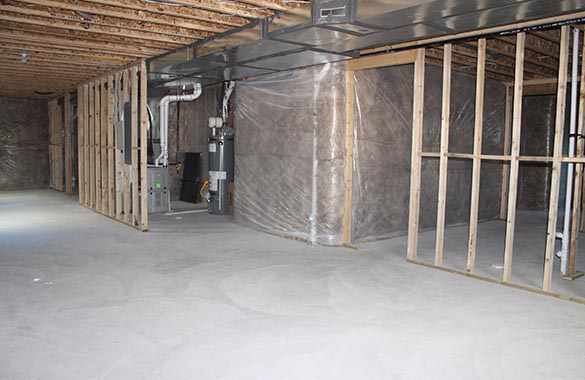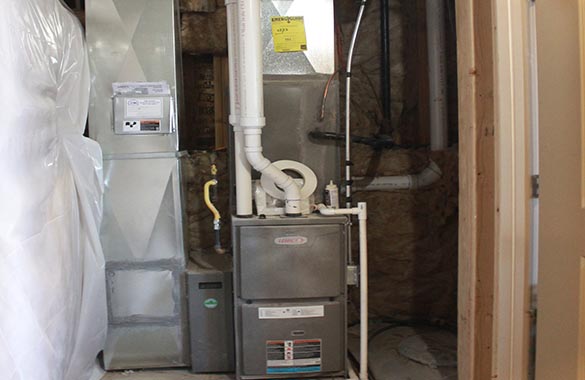Our Basement Living Blog is happy to publish our first guest post, courtesy of Rachel Heagney. She has written a post outlining how you can cut your energy bill while at the same time using sustainable energy. Let us know what you think of her ideas.
Creating Sustainable Heating OptionsIn a world where fuel prices fluctuate rapidly, we must learn how to use energy as efficiently and as sustainable as possible. But our dependence on energy has increased, and often this need contradicts with efficiency.Take commercial buildings for example. A typical building has both a heating and cooling system to keep the environment liveable. Such systems, however, are also known for being energy guzzlers. Heaters consume nearly 40% of the total energy consumption in a building, but as the process is basically converting electricity into heat, most of that used energy is wasted.Thus, it is important to aim for efficiency in the use of energy. This is one of the biggest issues faced by builders in this modern era. Building managers should learn how to adapt the use of energy conservation and sustainable technology. One way to do this is by minimising the emissions from the building or, at best, aims for a zero-emission target. This means that there would be no carbon contribution without compromising comfort.
 Reducing Heating Load
Reducing Heating LoadYou can reduce the heat load by optimizing the building fabric –the walls, ceiling, floors, windows and doors of the building. Usually, the heat generated in a building can be lost through the building fabric itself and some heat is lost through gaps and vents in the fabric which results to having cold air replace the warm air.The loss of heat will then be reproduced by the heating system which is a waste of energy. By improving the building fabric to make sure that the building is insulated and sealed efficiently, such wastes can be reduced.
Incorporate a Passive DesignPassive design takes advantage of the climate to maintain a comfortable temperature range in the house or building. One of the common designs is the use of solar energy as it can be either passive or active.Passive solar energy involves the use of windows or other glazed surfaces to capture the heat from the sun. Active solar energy, on the other hand, involves the use of “solar collectors” that are placed on the roof facing the south end to gather heat from the sun.But the use of solar energy should also be thoroughly considered. Improper design and installation can result to overheating during summer time. Excessive heat loss at night and winter would further bring in additional problems. There is a need to implement some counter measures to avoid these issues. But solar energy technology today is well-developed and there are already a large number of choices and designs to suit different applications.
Maximising Energy Efficiency of Installed SystemsYou need to make sure that the heating system is in good working condition through regular maintenance. This allows you to save energy and maximising its efficiency. Moreover, a well-controlled heating system means a lower rate of heat loss. Another good idea is to replace defective equipments with energy-efficient or renewable technology alternatives.
 Using Renewable Energy
Using Renewable EnergyRenewable energy systems include solar energy, biomass systems, and heat pump systems. As mentioned earlier, solar energy can contribute significantly to heating requirements. Now, let us take a look at the other two renewable energies.Biomass is energy derived from plant and plant-like materials. People have been practicing burning wood for many years to cook food and keep warm. It is a renewable, low carbon fuel. Putting up a biomass boiler is an alternative for a heating system.You need to take careful considerations. This is because biomass cannot be started or stopped instantly. In addition to that, it is not as flexible as fossil fuels. If correctly managed, chances are, it can deliver a significant reduction in the emission of carbon.Heat pumps use heat stored in the air, ground or water and makes it usable for domestic heating consumption. It has higher installation costs than other fossil fuel heating systems. But heat pumps offer a very energy-efficient way of providing heat.
Author BioRachel Heagney is a coffee-and-conversation lover, an eco-advocate, and a freelance writer. Passion for environmental sustainability and writing drives her to create compelling articles for large companies in Australia such as
Brivis, among others. During her rest days, she hangs out with her wonderful husband and their three lovely kids either by the beach or inside their cozy living room.
 Reducing Heating LoadYou can reduce the heat load by optimizing the building fabric –the walls, ceiling, floors, windows and doors of the building. Usually, the heat generated in a building can be lost through the building fabric itself and some heat is lost through gaps and vents in the fabric which results to having cold air replace the warm air.The loss of heat will then be reproduced by the heating system which is a waste of energy. By improving the building fabric to make sure that the building is insulated and sealed efficiently, such wastes can be reduced.Incorporate a Passive DesignPassive design takes advantage of the climate to maintain a comfortable temperature range in the house or building. One of the common designs is the use of solar energy as it can be either passive or active.Passive solar energy involves the use of windows or other glazed surfaces to capture the heat from the sun. Active solar energy, on the other hand, involves the use of “solar collectors” that are placed on the roof facing the south end to gather heat from the sun.But the use of solar energy should also be thoroughly considered. Improper design and installation can result to overheating during summer time. Excessive heat loss at night and winter would further bring in additional problems. There is a need to implement some counter measures to avoid these issues. But solar energy technology today is well-developed and there are already a large number of choices and designs to suit different applications.Maximising Energy Efficiency of Installed SystemsYou need to make sure that the heating system is in good working condition through regular maintenance. This allows you to save energy and maximising its efficiency. Moreover, a well-controlled heating system means a lower rate of heat loss. Another good idea is to replace defective equipments with energy-efficient or renewable technology alternatives.
Reducing Heating LoadYou can reduce the heat load by optimizing the building fabric –the walls, ceiling, floors, windows and doors of the building. Usually, the heat generated in a building can be lost through the building fabric itself and some heat is lost through gaps and vents in the fabric which results to having cold air replace the warm air.The loss of heat will then be reproduced by the heating system which is a waste of energy. By improving the building fabric to make sure that the building is insulated and sealed efficiently, such wastes can be reduced.Incorporate a Passive DesignPassive design takes advantage of the climate to maintain a comfortable temperature range in the house or building. One of the common designs is the use of solar energy as it can be either passive or active.Passive solar energy involves the use of windows or other glazed surfaces to capture the heat from the sun. Active solar energy, on the other hand, involves the use of “solar collectors” that are placed on the roof facing the south end to gather heat from the sun.But the use of solar energy should also be thoroughly considered. Improper design and installation can result to overheating during summer time. Excessive heat loss at night and winter would further bring in additional problems. There is a need to implement some counter measures to avoid these issues. But solar energy technology today is well-developed and there are already a large number of choices and designs to suit different applications.Maximising Energy Efficiency of Installed SystemsYou need to make sure that the heating system is in good working condition through regular maintenance. This allows you to save energy and maximising its efficiency. Moreover, a well-controlled heating system means a lower rate of heat loss. Another good idea is to replace defective equipments with energy-efficient or renewable technology alternatives. Using Renewable EnergyRenewable energy systems include solar energy, biomass systems, and heat pump systems. As mentioned earlier, solar energy can contribute significantly to heating requirements. Now, let us take a look at the other two renewable energies.Biomass is energy derived from plant and plant-like materials. People have been practicing burning wood for many years to cook food and keep warm. It is a renewable, low carbon fuel. Putting up a biomass boiler is an alternative for a heating system.You need to take careful considerations. This is because biomass cannot be started or stopped instantly. In addition to that, it is not as flexible as fossil fuels. If correctly managed, chances are, it can deliver a significant reduction in the emission of carbon.Heat pumps use heat stored in the air, ground or water and makes it usable for domestic heating consumption. It has higher installation costs than other fossil fuel heating systems. But heat pumps offer a very energy-efficient way of providing heat.Author BioRachel Heagney is a coffee-and-conversation lover, an eco-advocate, and a freelance writer. Passion for environmental sustainability and writing drives her to create compelling articles for large companies in Australia such as Brivis, among others. During her rest days, she hangs out with her wonderful husband and their three lovely kids either by the beach or inside their cozy living room.
Using Renewable EnergyRenewable energy systems include solar energy, biomass systems, and heat pump systems. As mentioned earlier, solar energy can contribute significantly to heating requirements. Now, let us take a look at the other two renewable energies.Biomass is energy derived from plant and plant-like materials. People have been practicing burning wood for many years to cook food and keep warm. It is a renewable, low carbon fuel. Putting up a biomass boiler is an alternative for a heating system.You need to take careful considerations. This is because biomass cannot be started or stopped instantly. In addition to that, it is not as flexible as fossil fuels. If correctly managed, chances are, it can deliver a significant reduction in the emission of carbon.Heat pumps use heat stored in the air, ground or water and makes it usable for domestic heating consumption. It has higher installation costs than other fossil fuel heating systems. But heat pumps offer a very energy-efficient way of providing heat.Author BioRachel Heagney is a coffee-and-conversation lover, an eco-advocate, and a freelance writer. Passion for environmental sustainability and writing drives her to create compelling articles for large companies in Australia such as Brivis, among others. During her rest days, she hangs out with her wonderful husband and their three lovely kids either by the beach or inside their cozy living room.